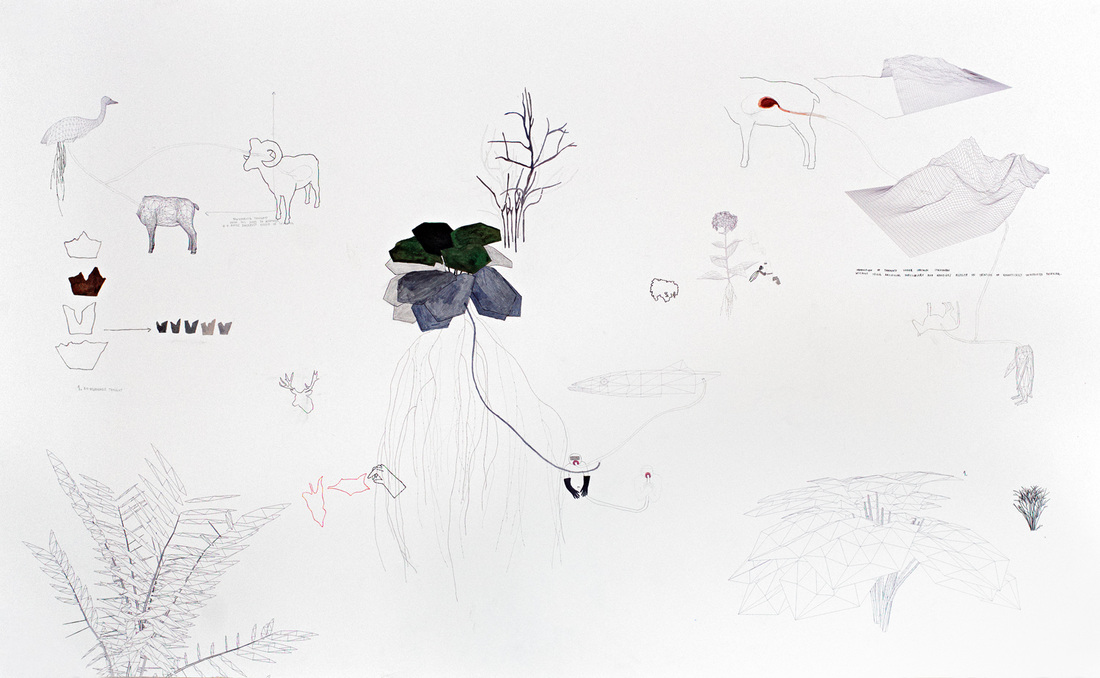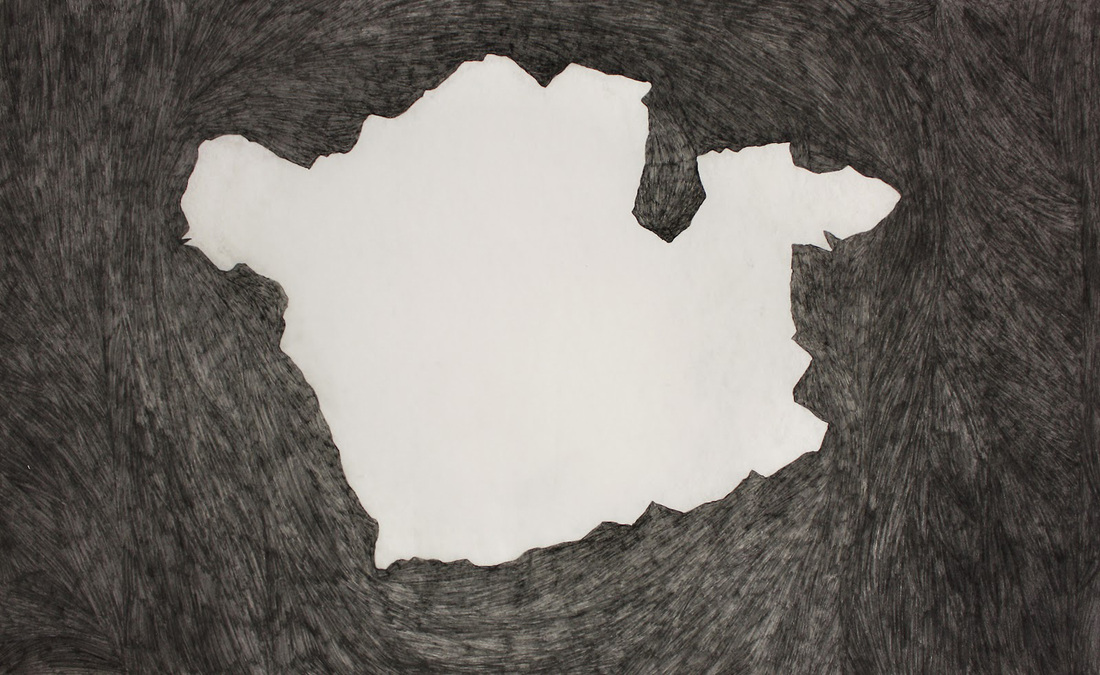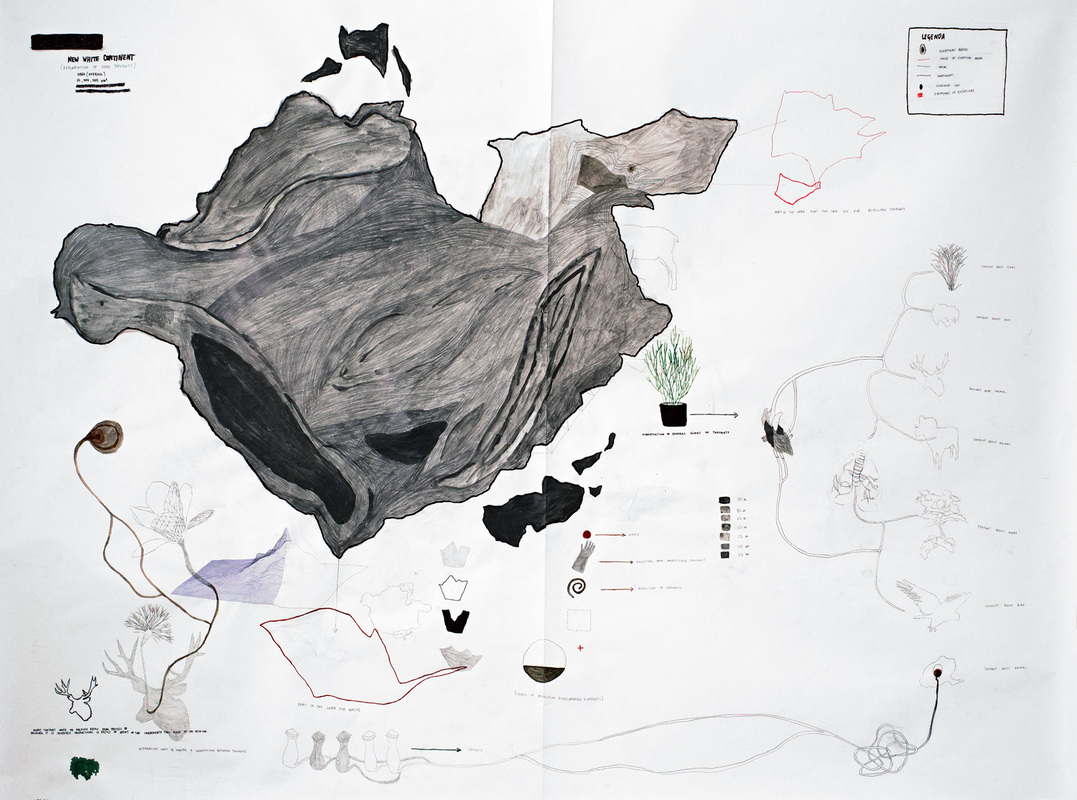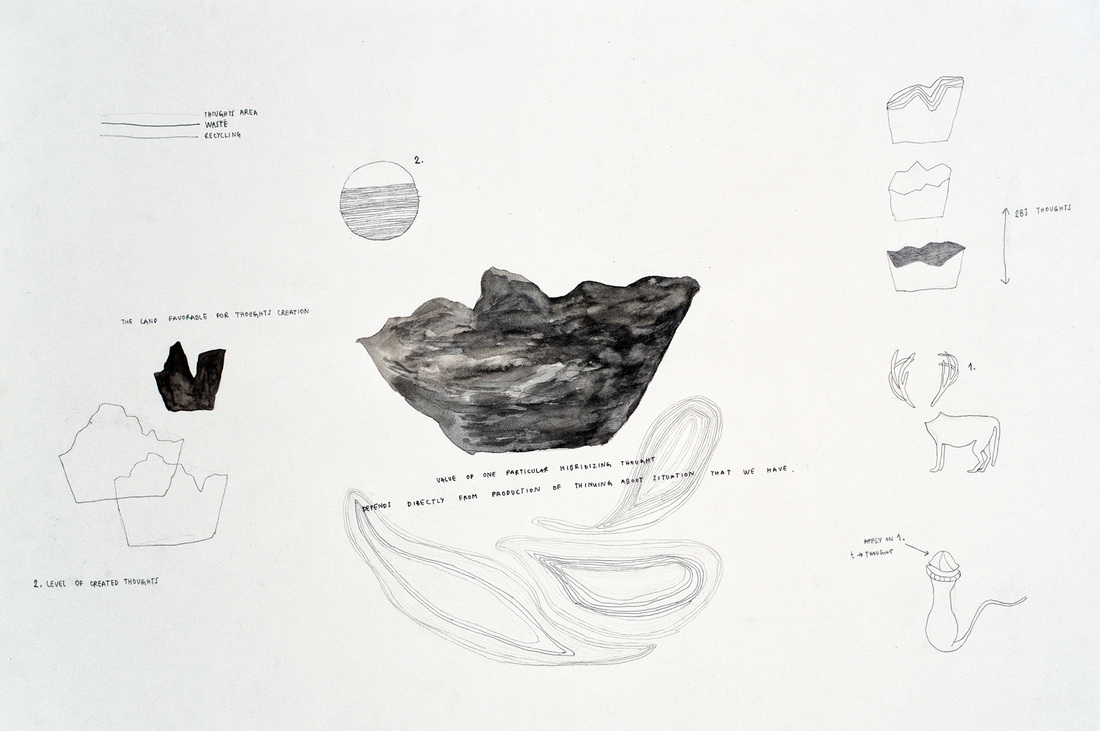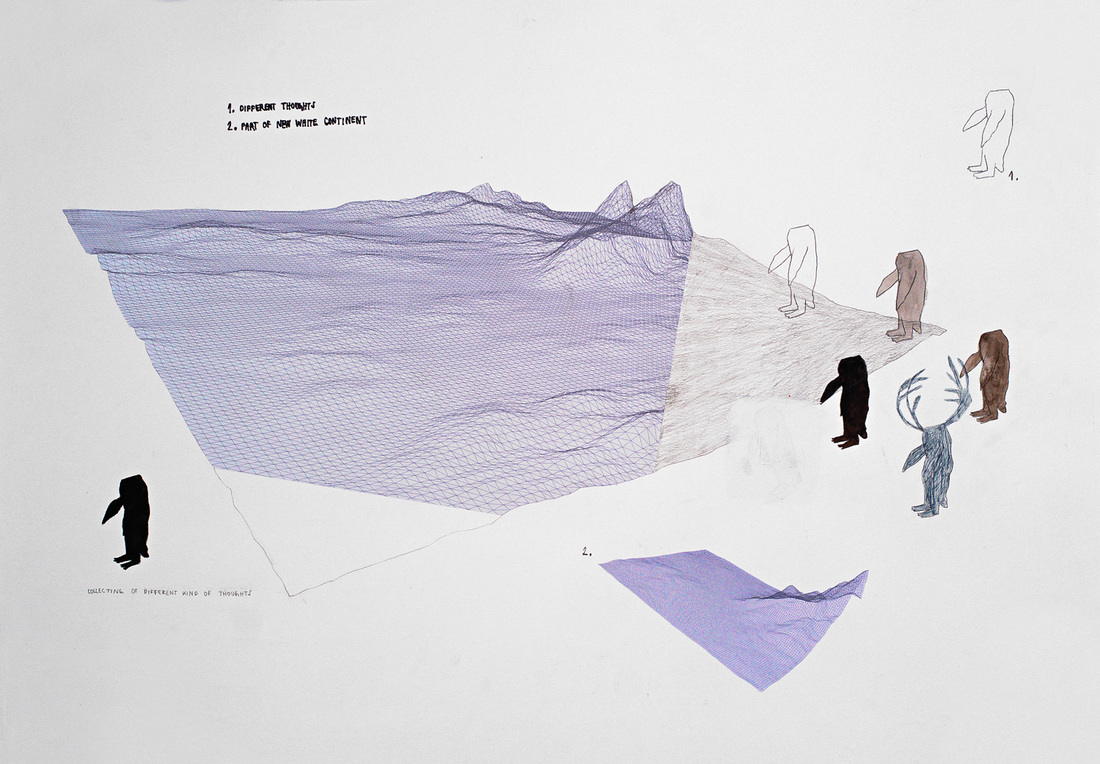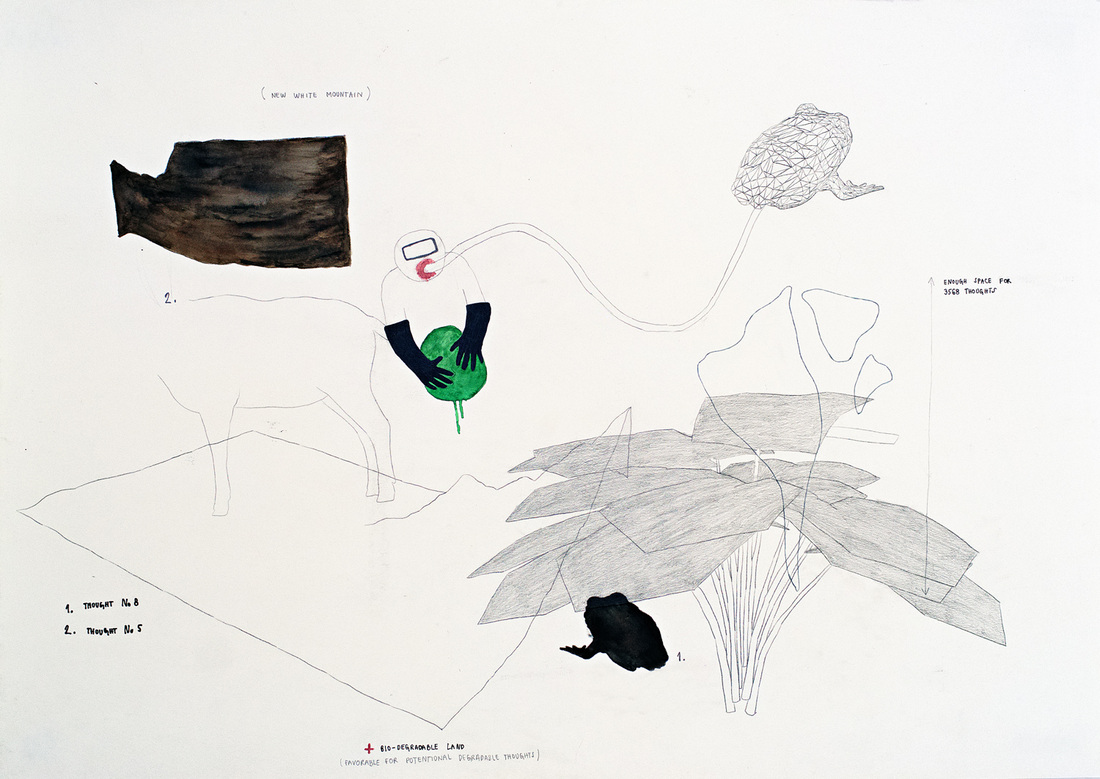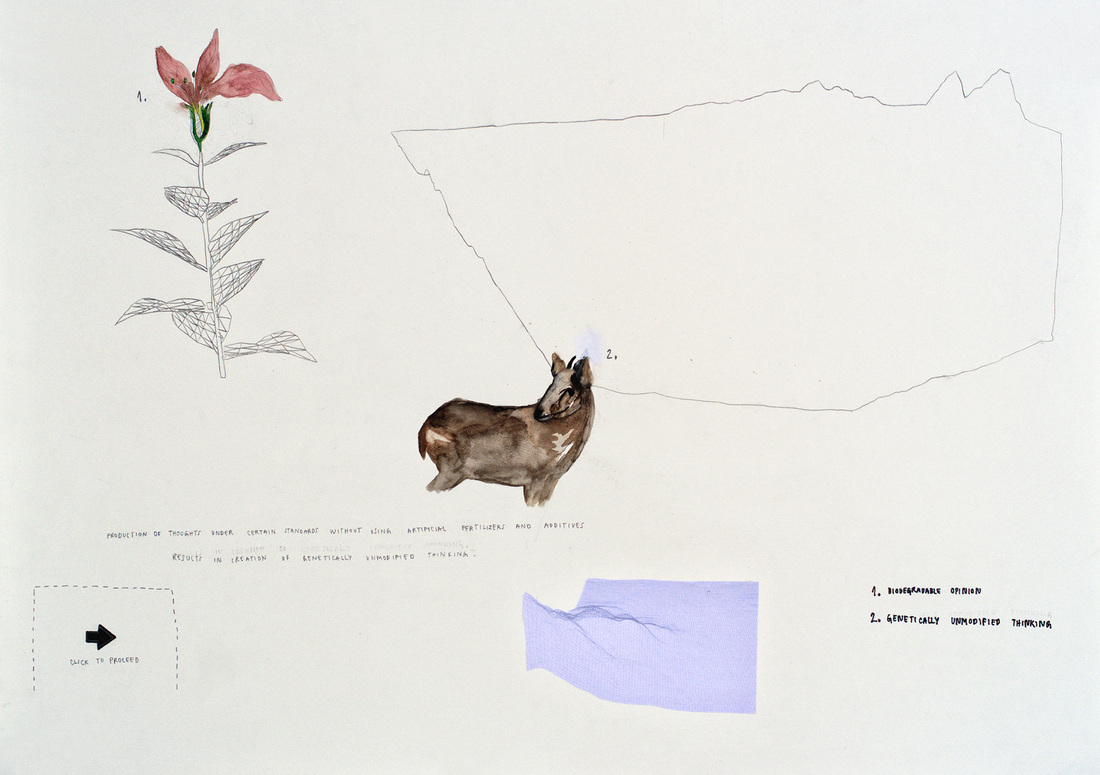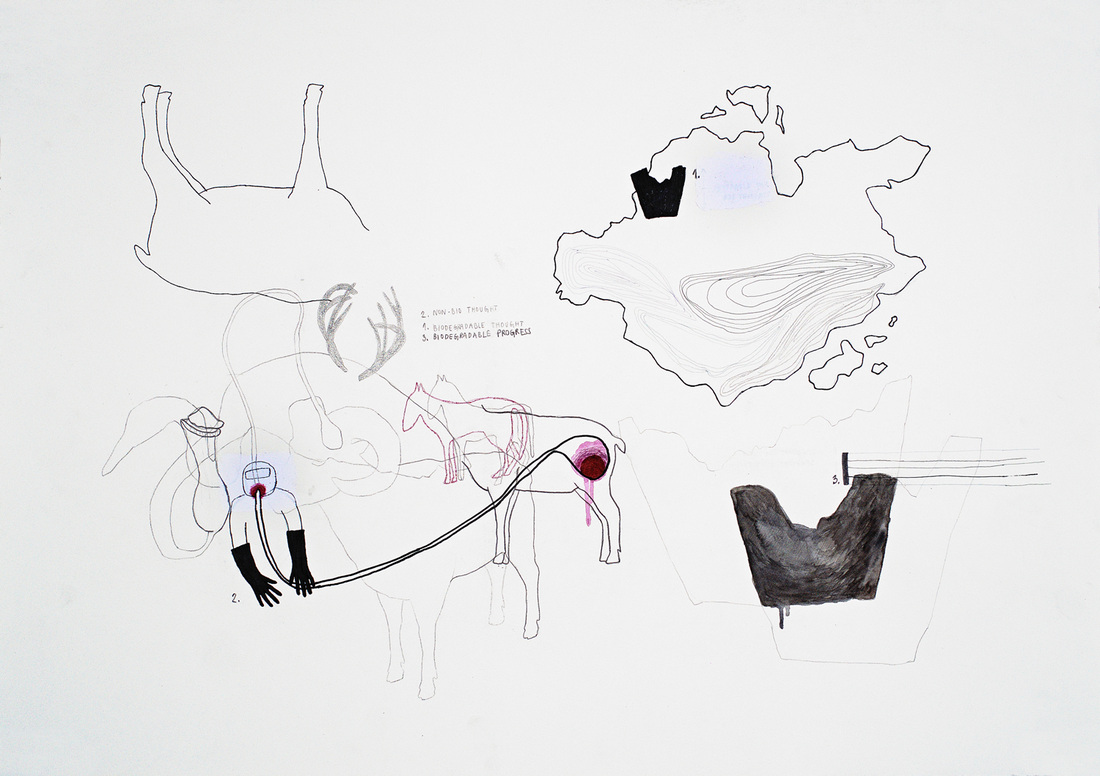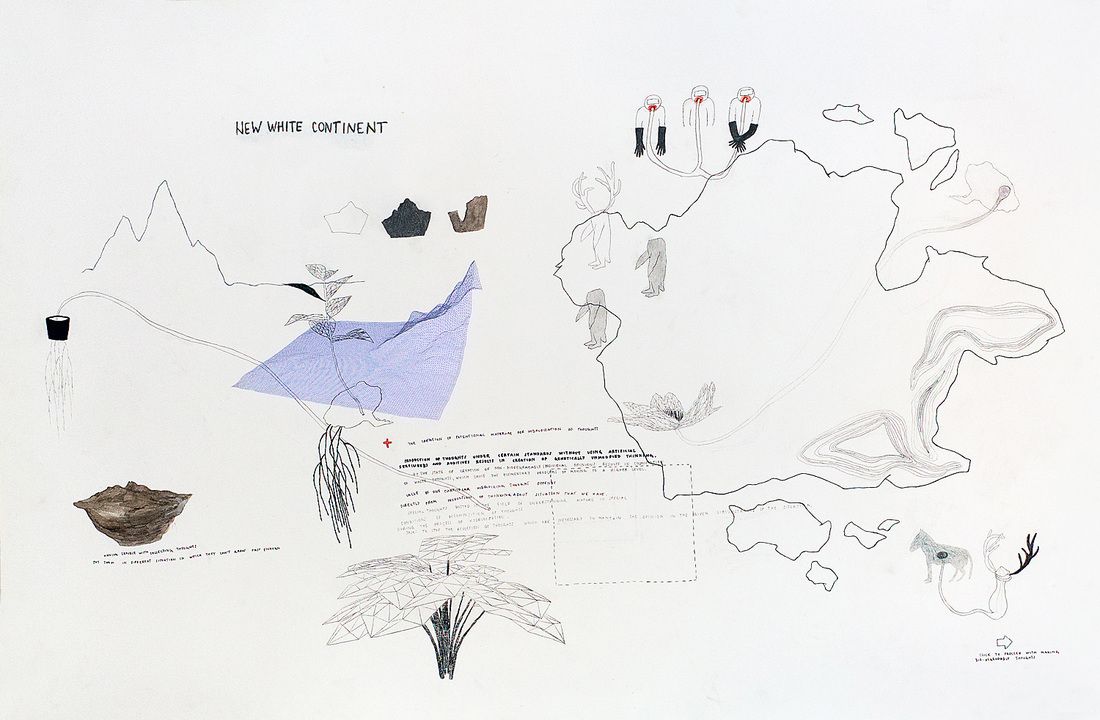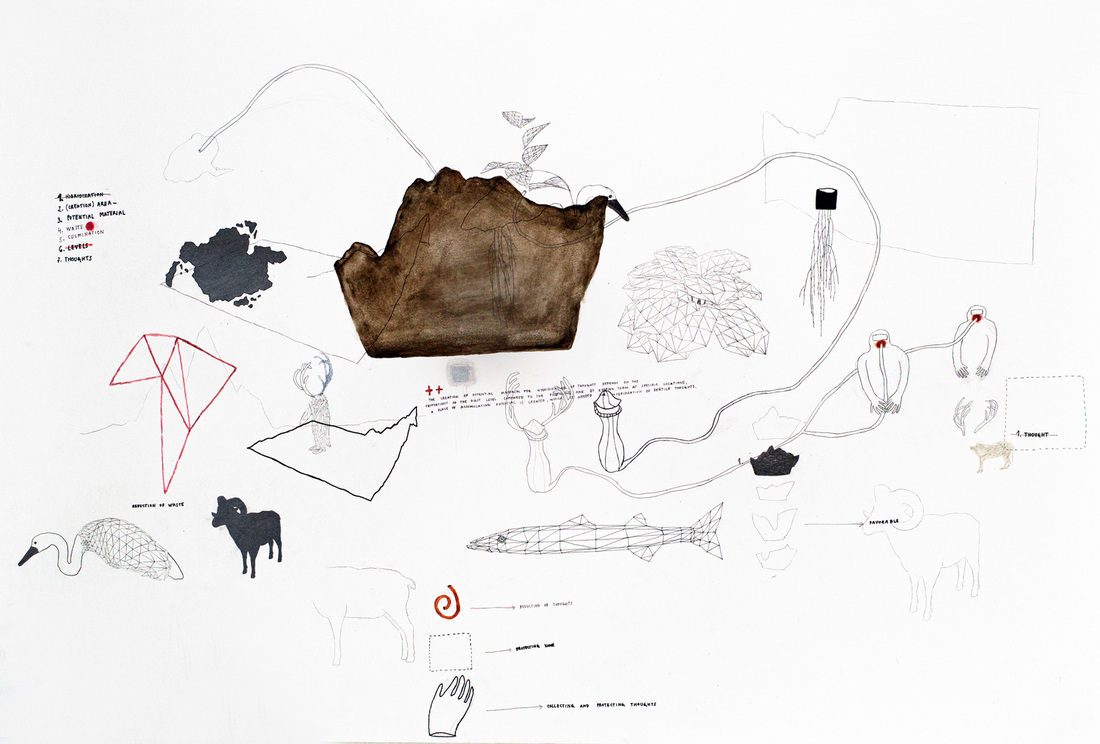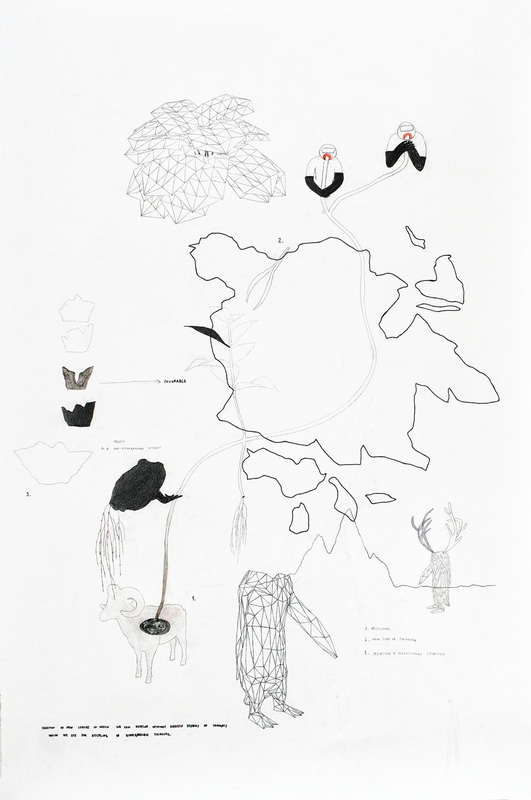2011/2012
drawing/installation
mentors:
Ives Maes
Els Roelandt
New White Continent is an installation made from elements and objects that people use in protests.
Banners, flags and pamphlets are set in the space like the remains of an imaginary demonstration.
The messages on the banners are all related to the issue of the unbalanced relationship between human
consciousness and the world that man builds for himself. As a whole, the installation evokes the utopian
world of a New White Continent – a continent that is completely independent in its unusual and impossible way
of survival – as a clear message about the consequences of an irrational manipulation of our environment.
New White Continent functions as a metaphor for the loss of unspoilt nature – the main cause of the
displacement or complete disappearance of a lot of plant and animal species. The fictional Continent
should remind the visitor of real-life occurrences, and as such challenge him to consider how important
our relation with our environment is.
14 drawings
dimensions: from 50 x 70 cm to 110 x 200 cm
19 drawings on hand made paper
(format A4)
2 videos
3 sketch-books
(format A4)
The work that Tijana makes is strongly embedded in post-war Serbia. There is a certain radicalism in
her work that is obviously trying to understand the aftermath of the Balkan Wars. But other than her
contemporaries, the radicalism in her work is not based on revolt, harsh actions or performances but
on a sort of ‘Soft Utopia’. With her project ‘New White Continent’ she is proposing a utopian world
where a profound ecological system is the solution for the harmony of humankind. It even seems that
the absence of humans is the solution for a peaceful society. But when you have a closer look at her
drawings, installations and videos, you can discover that her work is more about colors and
composition. Her interest in the formal aspects of her work seems to be larger than making a political
statement. In that sense I think she is making political art as a morally obliged necessity while wanting
to make ‘Art’. It is precisely this grey zone in between that makes her work so interesting. The search
for this answer produces great art.
Her installation of drawings is very interesting. She is trying to use drawing as an installation art. How
she is showing the drawings, alters the content, it emphasizes a political protest action. I think her
drawings in general can also function without this, but for this particular installation it works very well. It
shows that besides an added or emphasized meaning, it is also about how you present drawings
once they are made. It questions the 2 dimensionality of the medium and than again the work is about
‘Art’ and formal aspects. It balances very well on the sentence from Francis Alys: “how sometimes
something political can become something poetic, or how sometimes something poetic can become
political”. Or even a more famous predecessor Marcel Broodthaers: like him Tijana has created a
‘Poetic Map of the World’ instead of a political map.
her work that is obviously trying to understand the aftermath of the Balkan Wars. But other than her
contemporaries, the radicalism in her work is not based on revolt, harsh actions or performances but
on a sort of ‘Soft Utopia’. With her project ‘New White Continent’ she is proposing a utopian world
where a profound ecological system is the solution for the harmony of humankind. It even seems that
the absence of humans is the solution for a peaceful society. But when you have a closer look at her
drawings, installations and videos, you can discover that her work is more about colors and
composition. Her interest in the formal aspects of her work seems to be larger than making a political
statement. In that sense I think she is making political art as a morally obliged necessity while wanting
to make ‘Art’. It is precisely this grey zone in between that makes her work so interesting. The search
for this answer produces great art.
Her installation of drawings is very interesting. She is trying to use drawing as an installation art. How
she is showing the drawings, alters the content, it emphasizes a political protest action. I think her
drawings in general can also function without this, but for this particular installation it works very well. It
shows that besides an added or emphasized meaning, it is also about how you present drawings
once they are made. It questions the 2 dimensionality of the medium and than again the work is about
‘Art’ and formal aspects. It balances very well on the sentence from Francis Alys: “how sometimes
something political can become something poetic, or how sometimes something poetic can become
political”. Or even a more famous predecessor Marcel Broodthaers: like him Tijana has created a
‘Poetic Map of the World’ instead of a political map.
Ives Maes
sketch book 1
sketch book 2






